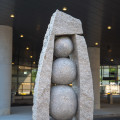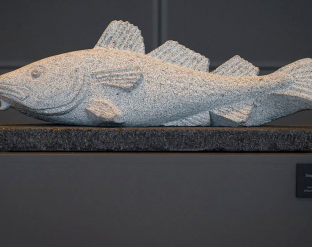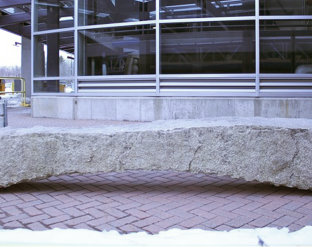Beach Pea, a sculpture by Jesse Salisbury, is a still life of geological movement split and shaped from one eight-ton natural-faced slab of Jonesborough granite. The seed shaped form was split into curves and internal blocks using hand-forged steel chisels and wedges. Mindful of the relationships between positive and negative forms, the blocks were carved and polished down to mimic beach rocks. The process is similar to the natural forces but controlled, and formed much faster than geologic time. The title comes from the wild Beach Pea, which grows by the seashore among the naturally rounded rocks shaped by time, wind and waves.
Jesse Salisbury is an internationally celebrated artist from Steuben, Maine. He is the founding director and host of Schoodic International Sculpture Symposium. Their mission is to host Stone Sculpture Symposia in downeast Maine that will engage individuals and communities in public art. Salisbury has work in public collections including the Curtis Memorial Library in Brunswick, The Steuben Library, and Bartlett Wines in Gouldsboro, in addition to his symposium pieces in Egypt, Japan, South Korea, and New Zealand.
Granite has played an important part in Maine’s history. In its peak usage in 1901, an estimated 3,500 workers were employed at 152 quarries on the mainland and off shore islands. Schooners laden with the stone would carry their cargo to public works projects along the east coast. It can be found in buildings and projects including the Brooklyn Bridge, the Church of St. John the Divine, and the Kennedy Memorial. Maine Granite is famous for the diversity of its color and texture and can often be traced back to the quarry it came from. It is the bedrock of Maine and remains an enduring medium for artists.
This sculpture is one of several generously donated to the City of Portland and the Jetport by William D. and Mary Louise Hamill.

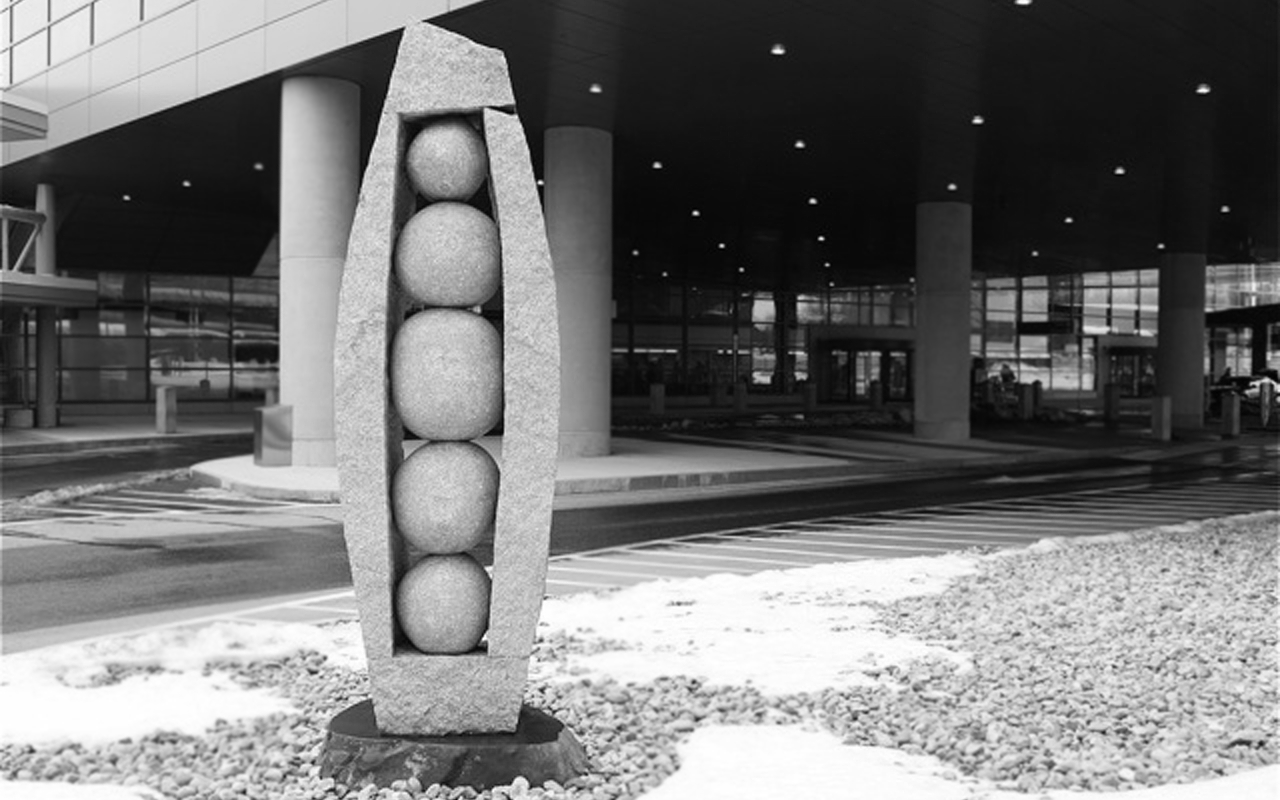
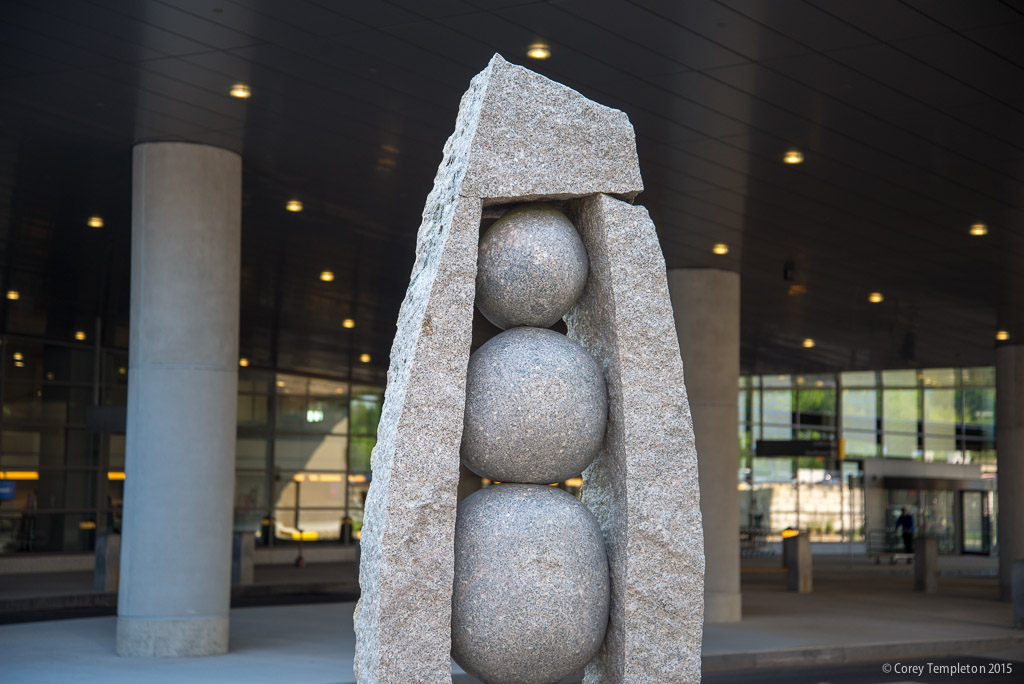
 Portland International Jetport
Portland International Jetport




